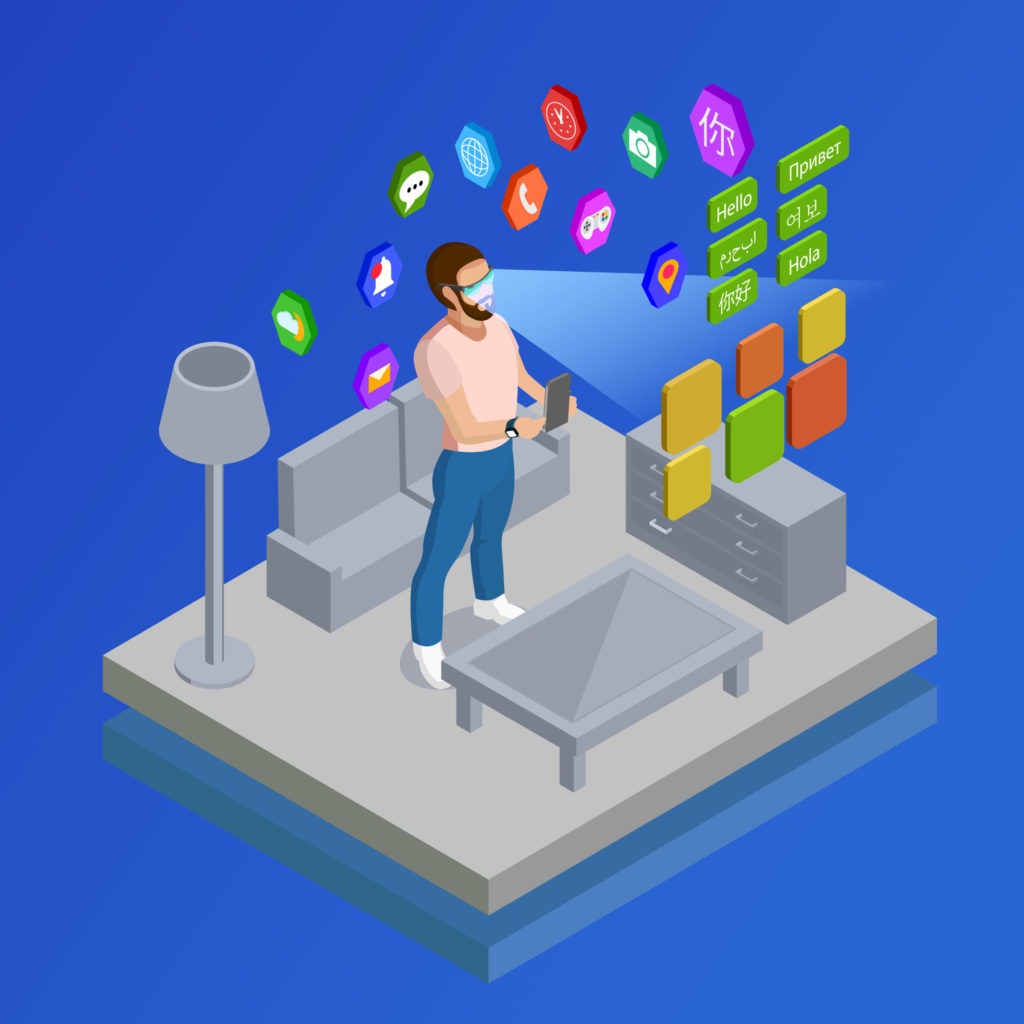E-learning platforms and Augmented Reality
With “e-learning” we mean online learning, through the use of technologies and the Internet.
Mainly, it is promoted to improve the quality of learning, because it is able to simplify the access to services and resources; in particular, it gives the chance to collaborate remotely.
E-learning is promoted as facilitation and/or integration of learning, but it can help those who have difficulties to attend courses of their interest.
This tool is spreading more and more, during the time, it has become more important.
E-learning: where can it be used?
E-learning provides the possibility of being administered to the companies and their employees, also in the school and university education. In particular, a lot of universities program the use of online learning for entire courses or for seminars and short contents, in their educational offer. Platforms of this type also allow students to share contents and information each other; in this way they create communities of students and teachers.
Then, it also proved very useful in the corporate field, especially for those companies with located offices: it helps employees, to whom it provides learning objectives, by creating a training path that involves using it online.
Instead, in the schools, e-learning is seen especially as a support for classroom teaching and not as a real replacement tool. Anyhow it stimulates the students to increase motivation and interactivity.

E-learning: how does it work?
For e-learning to be applied it is necessary an Internet connection and a digital tool. Moreover, multimedia tolls can be used. A real teacher cannot be present, but his figure is replaced by tutoring actions that are useful to motivate people, such as chats, emails and forums.
In the education, teacher have to upload the didactic material online, he have to create some test and also provide support, possibly.
Online learning and training help to create a link between technologies and didactics, it doesn’t help only to overcome the classroom concept; in fact it teaches to improve the use of some tools and technologies, it doesn’t teach only concepts: in essence, it offers an added value. Moreover, e-learning is a on-demand service and it can be used at anytime and anywhere, the most important thing is to have a digital tool connected to the Internet.
Advantages and disadventages
The main characteristics of e-learning are:
- Interactivity: that is having contact with teachers or experts without moving, but through devices.
- Dynamicity: it allows to make changes instantly, according to the needs of the learner.
- Modularity: the ability to organize courses and subjects into modules, according to the educational objectives.
Key advantage is to cut costs, but not only: it can break down physical and temporal barriers of an offline course, which for example provides for the need to maintain a classroom and the physical movement of those who must teach and those who must learn.
Moreover, it gives the possibility to deliver personalized services according to the type of user served.
Then, it offers a large variety of contents, usable quickly and easily, also through the use of continuously editable links and content. It is able to keep track of the route of user and of their level of satisfaction, in a simpler way.

E-learning and Augmented Reality: what links them?
Augmented Reality (AR) can be associated to e-learning in every sector of use of the latter: didactics, university and training. The novelty is to connect more playful aspects to theoretical concepts, they can improve and give greater value to learning experience, so all the thing is more immersive and interactive.
The course of study of the student will be enriched, it almost becomes a live event.
What can be done? Among the additional activities that allows AR there is certainly that of being able to interact with teachers as in the real world, but online, instantly.
Moreover, immersive activities can be created through virtual route, as the possibility to create a real games, maybe by score or by levels, so as to stimulate both the understanding of what is being studied and the speed of learning.
For example, if we are studying an historically event, we can relive the same moment by becoming the protagonist, through a real game.
But still, students can be interact through AR devices, working and studying together in real time. The learners will be able to participate in real role-playing games. Last but not least, with Augmented and Virtual reality, teachers will be able to monitor the level of knowledge of the students.
There are several e-learning platforms, they have already created or will soon implement a social space within them thanks to augmented reality. Among this is VITECO e-Learning Solutions, it develops intuitive and easy-to-use e-learning platforms across Europe, ideal for distance learning and for ECM FAD (continuing medical education), but also serious games and online courses, who could soon adopt Augmented Reality technology.
How much would the value of e-learning grow if there was an association with HR in training courses? Certainly his offer would be even more attractive.
If you are curious to know more about it, contact us!
You still want some high-tech inspiration? Read:
Augmented and Virtual Reality to potentiate cognitive capabilities
Augmented Reality: a new way of marketing
You want to develop your own AR project? Contact us!
